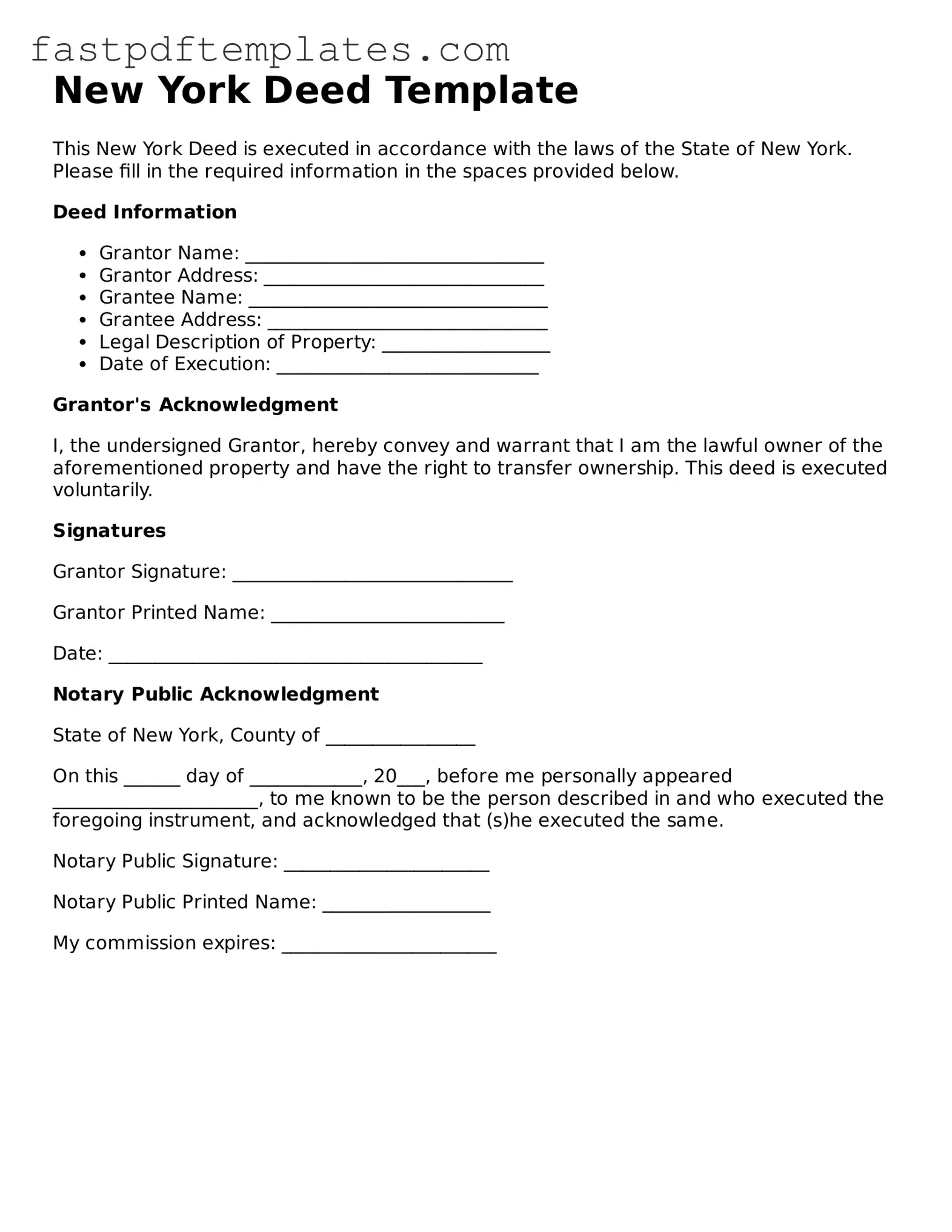The New York Deed form is similar to a Quitclaim Deed. Both documents serve the purpose of transferring property ownership. However, a Quitclaim Deed does not guarantee that the title is clear or that the grantor has any legal claim to the property. It simply conveys whatever interest the grantor may have, if any. This makes it a quicker and less formal way to transfer property, often used between family members or in divorce settlements.
Another document that shares similarities with the New York Deed form is the Warranty Deed. Unlike a Quitclaim Deed, a Warranty Deed provides a guarantee that the grantor holds a valid title and has the right to transfer it. This type of deed offers more protection to the buyer, as it ensures that the property is free from any liens or encumbrances, unless otherwise stated. It is often used in traditional real estate transactions to assure the buyer of their investment.
The Bargain and Sale Deed is also comparable to the New York Deed. This type of deed implies that the grantor has the right to sell the property but does not guarantee a clear title. While it does not provide the same level of assurance as a Warranty Deed, it is commonly used in New York, especially in transactions involving foreclosures or tax sales. Buyers should be cautious, as this deed does not protect against any claims on the property.
A Special Warranty Deed is another document that resembles the New York Deed form. This deed is similar to a Warranty Deed but limits the grantor's liability to the time they owned the property. It guarantees that no issues arose during the grantor's ownership, but it does not cover any problems that may have existed before. This type of deed is often used in commercial real estate transactions.
The Grant Deed is also akin to the New York Deed. This document conveys property ownership and includes implied warranties that the grantor has not transferred the property to anyone else and that the property is free from encumbrances. While it is more common in states like California, it shares similar features with the New York Deed, providing some assurance to the buyer.
A Deed of Trust can be compared to the New York Deed, although it serves a different purpose. This document involves three parties: the borrower, the lender, and a trustee. It secures a loan by transferring the property title to the trustee until the borrower repays the loan. While it does not directly transfer ownership like a traditional deed, it is a crucial part of real estate financing and shares the concept of title transfer.
The Executor’s Deed is another document that shares similarities with the New York Deed form. This type of deed is used when a property owner passes away and their estate is being settled. The executor of the estate can use this deed to transfer property to heirs or buyers, ensuring that the property is legally passed on according to the deceased’s wishes. While it serves a specific purpose, it functions similarly in terms of transferring title.
A Tax Deed is also comparable to the New York Deed. This document is issued when a property is sold due to unpaid property taxes. The government entity that collects taxes can transfer ownership through this deed, often at a public auction. While it may not guarantee a clear title, it effectively transfers ownership to the highest bidder, similar to how a traditional deed would transfer property rights.
Lastly, a Personal Representative’s Deed is similar to the New York Deed in that it involves the transfer of property during the probate process. This deed is executed by a personal representative of an estate and is used to convey property to beneficiaries or buyers. While it is specific to situations involving deceased estates, it shares the fundamental purpose of transferring property ownership, much like the New York Deed.
